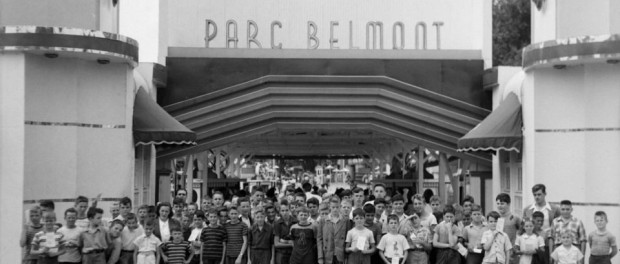My Montreal: Ahuntsic-Cartierville & Other Quebec Curios
 Belmont Park in 1948. Belmont Park, an amusement park now no longer in operation, was in the area which is now the Montreal borough of Ahuntsic-Cartierville. Source: Fonds Conrad Poirier/BAnQ. Accession number: P48,S1,P16831
Belmont Park in 1948. Belmont Park, an amusement park now no longer in operation, was in the area which is now the Montreal borough of Ahuntsic-Cartierville. Source: Fonds Conrad Poirier/BAnQ. Accession number: P48,S1,P16831
Ahunstic-Cartierville, one of the Montreal boroughs and the first on our trip around Montreal’s geography, has the honour of being home to one of the oldest villages in Quebec history: Sault-au-Récollet (Recollet Falls), established in 1696. It was in this area that Amerindians would carry their boats from the Saint Lawrence River and it was here that Jacques Cartier and his crew, along with Sulpician missionaries, held a symbolic first Catholic mass in Quebec/New France. No doubt aided by its proximity to the Saint Lawrence, it is one of the key areas that would help the colonisation of New France, a bloody and still controversial time in Quebec history.
The borough contains some of Montreal’s famous buildings and events throughout history, such as one of the oldest churches in Quebec history, the church on Visitation Island, as well as Belmont Park which operated as an amusement park from the early twentieth century well into the 1980s. Its evolution as the present borough has its roots not only in Recollet Falls and Cartierville but also Nouveau-Bordeaux and Ahuntsic village.
As of 2011, the year of the latest Canadian census (the next one being in 2016), just short of 127 thousand people call Ahuntsic-Cartierville home, and is serviced by three metro stations on the Orange Line as well as the Deux-Montagnes and Mascouche Lines of the AMT. According to the 2011 Census, Ahuntsic-Cartierville has a higher than average elderly population (defined as 65 and over) of 18% of its inhabitants, compared to the Montreal norm of 15%, and the average age of its citizens is approximately 40.7. 56% of its citizens are bilingual though most inhabitants are francophone.
Ahuntsic was the name of a possibly Huron (the historians are still debating this) missionary converted by Father Nicolas Viel. Both men were drowned in a suspected assassination by local Amerindians. Cartierville was the name of a local suburb in the 1890s that merged with Ahuntsic; contrary to what would seem logical, the Cartier is not Jacques Cartier, but statesman George-Étienne Cartier, one of the Fathers of Confederation.





